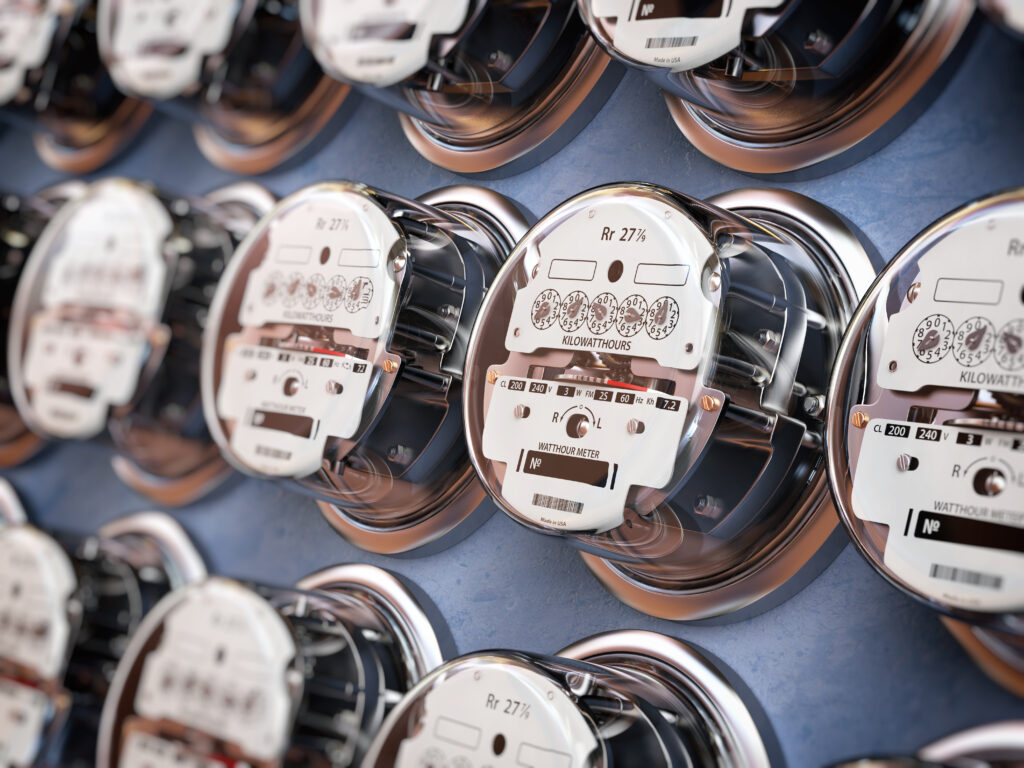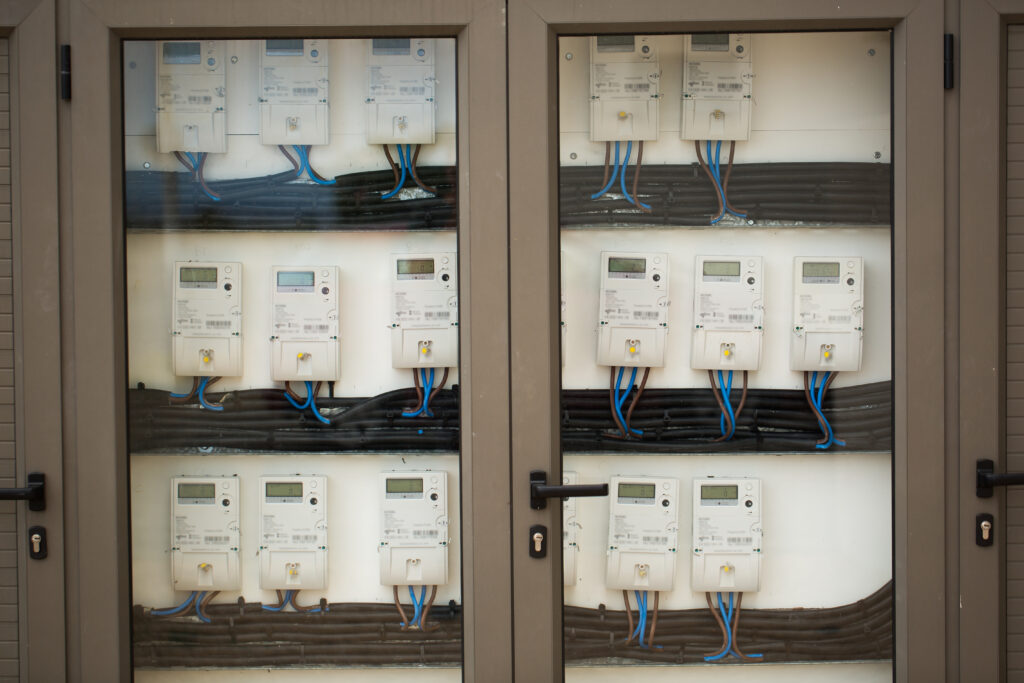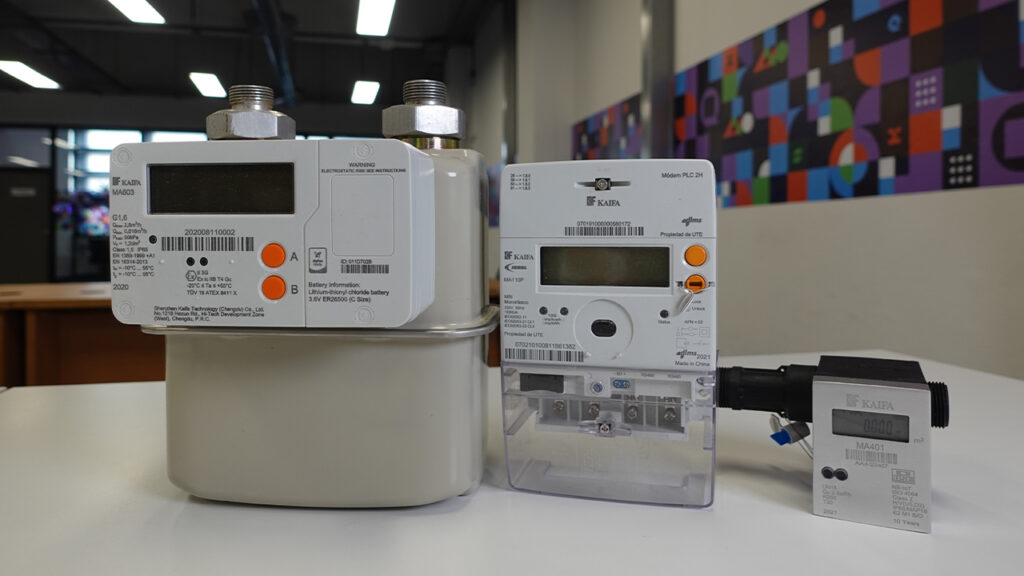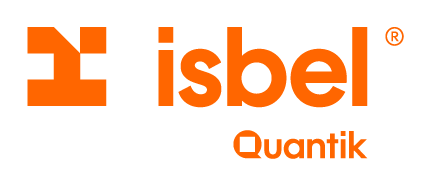You may have a smart electricity meter in your home, as they are already the norm in almost half of Uruguayan households. These devices allow, among other things, to reduce costs for electricity companies and users.
But what is smart metering all about? What are its benefits for users and for electricity, gas and water distribution companies? How has it evolved?
A bit of history
For centuries, the various public utilities have been developing. The first ones were dedicated to supplying cities with water, and later gas utilities were added. At the end of the 19th century, it was the turn of the electricity companies. Somewhat closer in time, telephone utilities were added, which later became generalised into telecommunications.
In English jargon, the first three are called utilities, while the latter are called telcos.
In general, utilities have in common that the price paid for the service is determined by how much the user consumes. Thus, the need to measure consumption was born almost at the same time as the companies themselves.
The predominant technology for metering consumption during the 20th century was mechanical (or electromechanical, for electricity meters).

Since the end of the last century, meters have become electronic, in particular electricity meters.

The metering device, whether mechanical or electronic, is placed at the supply inlet, and once a month a company official, known as a tomaconsumo, passes by each household to record the value indicated on the device's display.
The advent of smart metering
From the late 1980s, with the communications boom, the first smart metering (or telemetering) systems appeared.
As the name suggests, telemetering is the remote reading of the measured value by the device.
The first systems to add communications to meters were AMR (automatic meter reading) systems, which became popular mainly in Europe and the United States in the last decade of the 20th century.
From a technical point of view, AMRs incorporate a module into the meters consisting of a modem (which allows communication) and some kind of transducer, either optical or magnetic, which allows it to obtain the measured value. When the meter is electronic, this integration can be done more easily through communication ports.
AMR systems include a central software, called MDC (meter data collector), which is responsible for periodically collecting measurements and submitting the information to the company's billing system.
Smart meters: what are they and how do they differ from traditional meters?

For electricity meters, the advance of microelectronics led to developments at different levels.
On the one hand, the measurement functions were implemented in integrated circuits (chips) which quickly became commoditised and ceased to be a problem for the manufacturers. Today we can say that any electronic meter correctly measures energy and other electrical quantities (assuming it comes from a serious factory). In other words, measurement in itself is not a technological challenge today.
On the other hand, processing and memory capacity was added to the meter, which gave rise to smart meters. This new category of meters adds various functionalities, both in terms of configuration and parameterisation facilities and the collection of information and monitoring of the operation of the supply, among others.
One of the most important differences with traditional meters is that the operating parameters of a smart meter can be configured (i.e. are modifiable after manufacture) remotely, from the central management system.
For example, a (traditional) electronic meter can be multi-tariff, but the tariff scheme (number of different tariffs, time of application of each tariff) is configured at the time of manufacture. If a customer wants to switch from a single-tariff contract to a dual-tariff contract, the electricity company must replace the meter. Something similar happens with the contracted power: in this case, what is changed is the limiting thermomagnetic key.
In contrast, with smart meters these features can be configured remotely at any time, which among other things enables more tariff scheme options.
What are the benefits of smart meters?
Simplicity, savings and better proposals
The facilities introduced by smart meters simplify the operation of electricity companies and reduce the costs (and therefore the price) of contract changes. They also enable utilities to generate attractive commercial proposals that cater for different user profiles.
More information for planning
Having a larger memory capacity and being connected to the central management system allows more information to be collected than with the previous systems. If we compare both modalities, we go from collecting the total consumption of the supply once a month (for non-connected meters) to collecting the daily multi-rate closures in AMR systems, to collect values of energy, power, voltage, current, phase and other magnitudes every short period of time (15, 30 or 60 minutes).
This functionality generates an enormous volume of information, which the utility processes with big data tools and allows it to forecast demand behaviour more accurately. This becomes essential for planning the required evolution of the electricity grid, whether for generation, transmission or distribution.
More information for the user
This information is not only useful for the electricity company. The user has access to his load curve, which shows his consumption pattern and allows him to identify what things he can change in his habits to get more out of the tariff scheme he has contracted, which can translate into paying less for the same energy in a month.
Real-time service monitoring
By having a small on-board computer, a smart meter can continuously monitor the characteristics of the electricity service being provided.
This allows the detection of fraud attempts (such as scams promoting a significant reduction in electricity bills on social media) and monitoring for overloads or abnormal service conditions, such as high or low voltage, automatically disconnecting power to prevent further damage to the customer's electrical installation or devices plugged in.
What are AMI systems?
The combination of smart meters, appropriate communications infrastructure and centrally installed software, including the HES (head end system) and MDMS (meter data management system), make up what is known as the AMI (advanced metering infrastructure) system.
It is these systems that exploit the full potential of the intelligence of the meters and the information gathering they allow.
Gas and water utilities, on the other hand, are targeting AMR-type systems. This is because communications in AMI systems have two characteristics that cannot be achieved in their environments (at least in the current state of technology): they require a high volume of information traffic and that meters are permanently connected to receive commands from the central site at all times.
This is easy to achieve in an electricity meter that is connected to the electricity grid, but difficult when the meter has to be powered by a battery that has to last between 5 and 10 years, as is the case for gas or water meters.
The future of telemetry
The global trend for electricity distribution utilities is to move towards AMI systems because of the benefits they bring. However, until better batteries or other mechanisms to energise meters are developed, only these entities will be able to take advantage of AMI, which is a challenge for water and gas utilities.
What is undeniable is that the world of all utilities is moving towards telemetering, with the highest possible degree of intelligence in meters, depending on the technologies available at any given time.
By:
Sergio De Cola, Principal Engineer.
Sergio holds a degree in Electronics Engineering from the University of the Republic (Udelar) and has completed several postgraduate courses in computer science, robotics and telecommunications. He is an assistant professor (grade 3) at the Faculty of Engineering of Udelar. He has more than 35 years of professional experience developed in IT infrastructure, data communication, telephony and software development companies. From 2011 to 2015 he held the position of Director of the National Telecommunications Directorate of the Ministry of Industry, Energy and Mining (MIEM-Dinatel).



